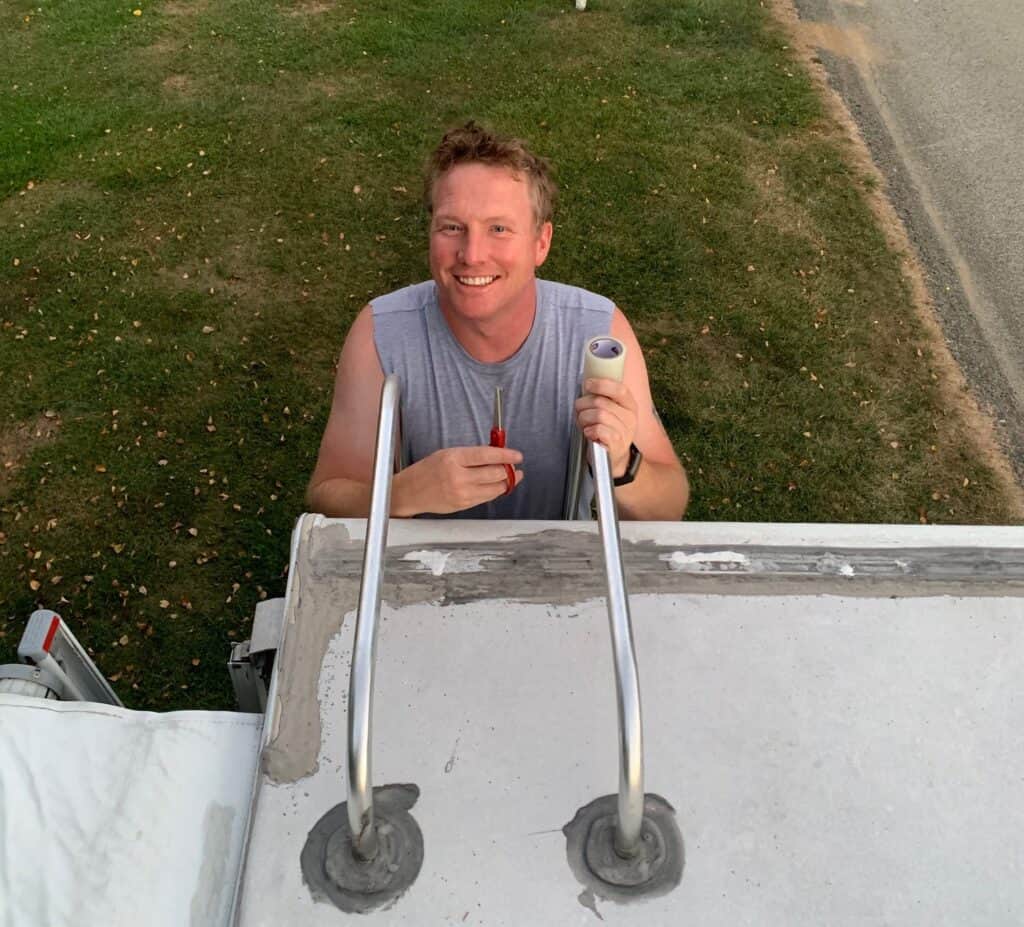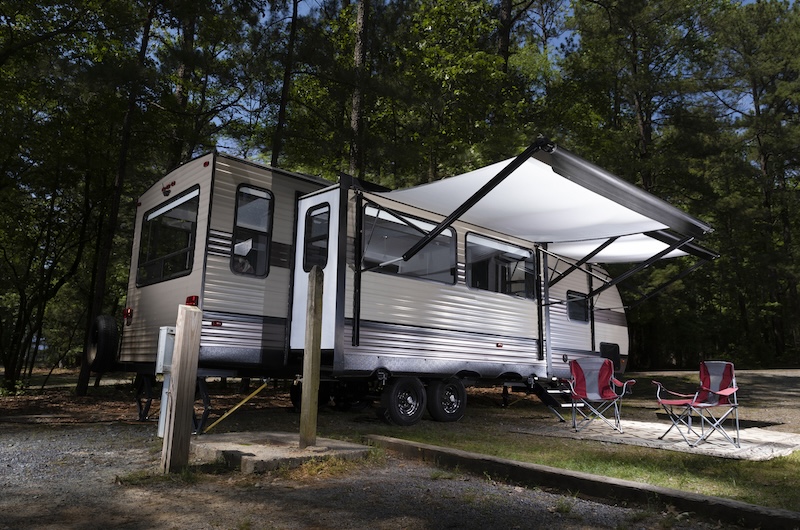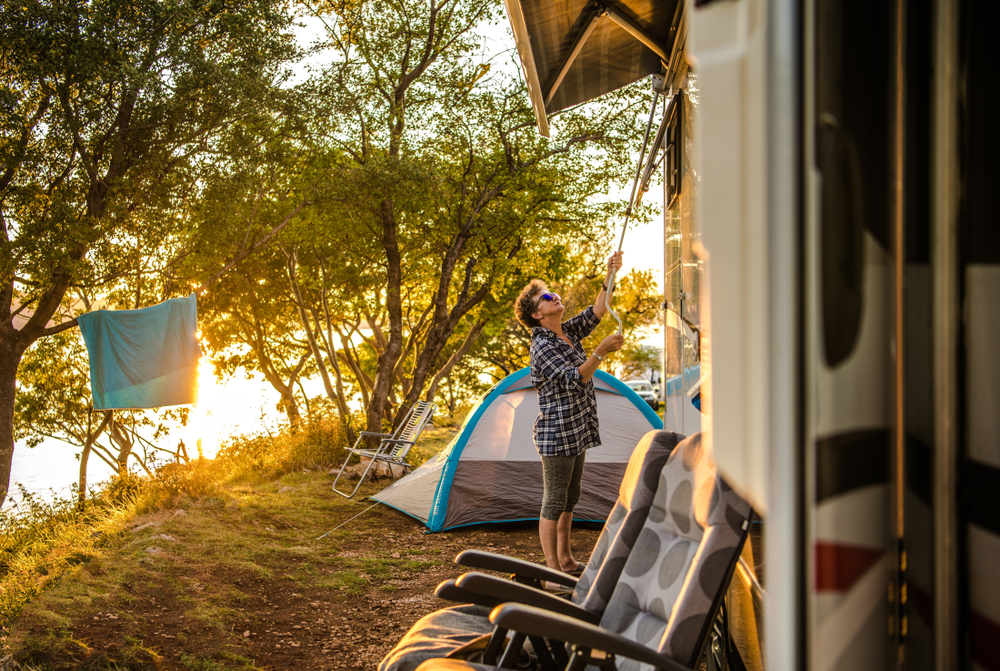All Categories
Featured
Table of Contents
- – Camper Service Center Eastvale, CA
- – OCRV Center
- – Camper Service Near Me Eastvale, CA
- – Camper Service Center Eastvale, CA
- – Camper Repair Shops Near Me Eastvale, CA
- – Pop Up Camper Roof Replacement Eastvale, CA
- – Camper Repair Places Near Me Eastvale, CA
- – Camping Repair Near Me Eastvale, CA
- – Camper Repair And Service Eastvale, CA
- – Pop Up Camper Repair Near Me Eastvale, CA
- – Camper Service Near Me Eastvale, CA
- – Pop Up Camper Repair Near Me Eastvale, CA
- – Camper Service Center Eastvale, CA
- – OCRV Center
Camper Service Center Eastvale, CA
Most campers around us had their awnings deployed. We returned home the other day in the rain, so today I released the awnings to dry them out.
It appears that concerning 18 to 24 inches of the metal extrusion (gutter) that the awning is slid into has actually retreated from the wall and turned a bit - Pop Up Camper Repair Near Me Eastvale. I'm presuming the fixing will entail changing that entire size of gutter (10 feet?) and most likely making use of larger scale screws to change those that were pulled out
We have actually obtained broken braces on our camper awning. 2 months back, we had a negative tire blow-out that caused a curved axle, significant fixings, and so on, and we wonder if the brackets cracked/broke throughout the bouncy ride prior to we understood the axle was in trouble. We have not had the awning out since it was in the shop to be fixed.
Camper Service Near Me Eastvale, CA
The awning itself, spring mechanism, and so on, is fine. The rear brace setting up is great, yet the front one is cracked near the bottom and completely appeared on top, to ensure that the leading assistance arm no more fastens to the camper. We are in trouble. I don't want/like to camp without it.
Does this sound affordable? Also the actual support arms are undamaged. They are white steel (? aluminum?) and the braces are a heavier grey metal - it's the grey bits that have actually cracked/broken. The real arms are entirely normal/functionalI'm simply intending to ensure we're not being taken in out of our anxiety.
Camper Service Center Eastvale, CA
The Motor home is a 2007, yet we had rain damages in 2010 and the entire awning was brand name brand-new at that time. If absolutely nothing else, we would certainly like advice as to how we can "jerry gear" this for a while - possibly even get us via the summer - without having to place in a brand brand-new awning!
If we need to go awning-less, we will, but I prefer to locate a fast and effective option. Anyone? Please!.
Welcome to my Motor Home Renovation Collection!.?.!! I get on step 5 of changing the roof covering of my '93 Fleetwood Jamboree Searcher motorhome. In the last step I got rid of the roofing system trim molding from three sides of the roofing. But in order to get rid of the fourth one, I need to remove the RV awning also.
In order to change the rubber roofing system and roof outdoor decking, I require to get rid of the awning. My motor home awning has legs which pivot at the base but can be gotten rid of to establish on the ground. I drew these out. Pressing this lever launches the foot of the awning legs.
Camper Repair Shops Near Me Eastvale, CA
You'll also see how the brace is hooked on top of the trim molding that holds down the fiberglass panel in the back corner. That's why the awning requires to come off initially prior to the last steps of this post (subjecting the front and back edges of the roofing outdoor decking).
Below's an information of exactly how the awning installing brackets are screwed into the camper. I didn't actually need to do this action up until the awning got on the ground yet I noticed this established screw right here holding the awning canvas right into the awning rail (there's one more at the appropriate end of the awning.) I went ahead and loosened it.
Once both screws are removed, simply draw back on the brace. Loosening the big lag screws that hold the RV awning installing brackets to the camper (with an outlet wrench) Getting rid of the installing brace once the lag screws have actually been unscrewed. Keep in mind how this end was hooked over the discontinuation bar that secures the rounded corner at the back of the roofing system.
Both lag screws eliminated from the awning installing bracket on the right. Removing the mounting brace of the awning. As soon as the installing brackets are detached, it's time to remove the awning rail. Keep in mind, the awning rail is basically much like a regular item of aluminum roofing edge trim molding other than that at the lower edge there is a circular track with a slot in it.
Pop Up Camper Roof Replacement Eastvale, CA
To change the roof covering, this awning bar requires to be eliminated. If you're simply replacing your awning and not repairing the whole roofing system like me, then you wouldn't need to eliminate the awning rail.
Going down the legs a couple of notches to decrease the entire awning. Currently I can reach this trim molding (the awning rail) quickly. Currently it's much like getting rid of the side trim molding beyond of the camper. Take out the plastic insert that covers the screw heads (you might have to cut completion with an energy knife if it is put under the rail) and afterwards simply yank it out.
You might have to reduce the end with an energy knife if it is covered under. Just tug it out!
As soon as the screws were out I started prying up the awning rail. (There will be some butyl tape or putty sticking it to the rubber below.) DIRECTS! Once I began to pry off the awning rail, the entire thing suddenly snapped off and rolled up into the awning like a window blind.
Camper Repair Places Near Me Eastvale, CA
Feel in one's bones it's coming! When the screws are gotten rid of, the awning rail can be torn up. You can see the edge of the rubber roof covering that was secured under it. When you begin drawing the awning rail away it will suddenly snap free and roll up like a window blind with the awning.
This thing is hefty so if you're functioning alone like me after that reduce it the ground gradually by strolling the legs far from the camper on each side one by one till you can lay it on the ground. I turned the legs back up and out of the means against the camper.

After that I leaned the legs back against the camper. When the awning was on the ground I got rid of the little collection screw at the best end of the awning, (I got rid of the one at the left end earlier.) These screws maintain the awning canvas from gliding in the rail. Once they're removed the rail simply glides right off the canvas by gliding the whole rail away.
Camping Repair Near Me Eastvale, CA
Once the 2 established screws were removed I can move the entire awning rail right off the awning. One more appearance at the account of this trim molding (the awning rail) after it was gotten rid of.
The next point holding down the motor home fiberglass home siding panels is the edge trim molding shown below. It has a plastic screw cover strip placed, so once again I just tore up the plastic insert and pulled out enough so I could unscrew some screw heads.
I might end up removing it later if I require to change the luan plywood underneath this fiberglass change. The roof covering decking plywood expands under the fiberglass skin at the rear of the camper. In order to replace it, this fiberglass change need to be lifted. To raise that, the edge molding need to be removed.
Then I could swing the trim mold off the side sufficient to lift up the side of the fiberglass panel. As soon as I can swing that piece of corner molding off the side, I started to tear up the fiberglass panel. It has glue under it and littles rusted staples and sheared off screws still holding it in position.
Camper Repair And Service Eastvale, CA
I switched from a scrape to a stiff 6 vast putty blade. This piece chipped out of the fiberglass panel when I was trying to pry it up. Then I switched over from a scrape to 6 inch large taping blade. After that I loosened the various other edge trim in the same way, and bent it laterally simply enough so that I might raise up the edge of the fiberglass panel.
I found a lot of water damages in the plywood under the fiberglass panel so I'll most likely be replacing it. Which implies I'll end removing those edge trim items all the method down nevertheless. We'll obtain to that later on. I had a substantial quantity of water damages in the joint between the rounded corner and the roof deck.
Pop Up Camper Repair Near Me Eastvale, CA
The side of the roof covering decking is revealed at the back of the camper! I've revealed the roof covering substratum at the back edge of the camper. Now its time to locate the front edge.
Once more, I pried that layer up too (there had not been much holding it down yet glue at this moment) and after that I could pull out the remainder of the rubber roof that was glued underneath it. Now I can take out the last little rubber roof from beneath the fiberglass and luan plywood.
Camper Service Near Me Eastvale, CA
I noticed there were no fasteners holding the roofing system plywood down. I could see the blue styrofoam insulation under the damaged areas of luan plywood on the roof covering. Notice there are no fasteners at all holding down the roofing system plywood!
As soon as I scuffed up some of the damaged bits I got hold of a strong item of plywood and started to draw. The entire thing began to draw up cleanly unharmed without damaging the foam board insulation at all. Now I can see the steel framing below. After that the plywood began peeling up as one piece, leaving all the styrofoam well intact.
There is a steel reinforced tape on the base that signs up with the assemble. I do not recognize how exactly they handled to glue every little thing down so well and get this tape joining them from the underside, but it was nicely done. The pieces of roofing ply are collaborated at the joints underneath with a metal-reinforced tape.
Pop Up Camper Repair Near Me Eastvale, CA
I quickly understood the roofing system was shedding stamina and stiffness as I brought up the top layer, so cracked it off right before the very first seam. A close of the steel framework in the roofing system: one inch wide, one and a fifty percent inches tall. Right here's an information of the wiring in the insulation foam and the solid timber supports where the antennas screw into the roof covering.

I discovered a number of water damages in the plywood under the fiberglass panel so I'll most likely be changing it. I had a considerable amount of water damages in the joint between the rounded corner and the roof covering deck.
The side of the roof covering decking is subjected at the back of the camper! I've exposed the roofing substrate at the back edge of the camper. Now its time to discover the front edge.
Once again, I pried that layer up as well (there wasn't much quieting but glue at this factor) and after that I could pull out the remainder of the rubber roofing that was glued below it. Pop Up Camper Repair Near Me Eastvale. Now I can take out the last little rubber roof from beneath the fiberglass and luan plywood
Camper Service Center Eastvale, CA

I saw there were no bolts holding the roof plywood down. It was simply glued. So I started carefully peeling it up. I can see the blue styrofoam insulation underneath the harmed areas of luan plywood on the roofing. Notification there are no bolts at all holding down the roofing system plywood! It is totally glued.
As soon as I scraped up several of the broken little bits I obtained hold of a strong piece of plywood and started to pull. The entire point started to bring up easily intact without damaging the foam board insulation at all. Currently I can see the steel framework under. After that the plywood began peeling off up as one piece, leaving all the styrofoam well undamaged.
There is a metal reinforced tape on the bottom that joins the assemble. I do not understand exactly how specifically they took care of to glue everything down so well and obtain this tape joining them from the bottom, yet it was well done. The pieces of roof covering ply are collaborated at the seams underneath with a metal-reinforced tape.
I quickly recognized the roofing was losing toughness and rigidity as I brought up the leading layer, so split it off right before the initial joint. A close of the metal framing in the roofing: one inch wide, one and a half inches tall. Here's a detail of the wiring in the insulation foam and the solid timber supports where the antennas screw right into the roof.
Camper Trailer Repair Eastvale, CACamper Service And Repair Eastvale, CA
Camper Trailer Repair Near Me Eastvale, CA
Camper Repair Eastvale, CA
Camper Service Near Me Eastvale, CA
Camper Awning Replacement Eastvale, CA
Camper Air Conditioner Repair Near Me Eastvale, CA
Camper Service Center Eastvale, CA
Camper Roof Repair Near Me Eastvale, CA
Camper Service Center Eastvale, CA
Pop Up Camper Roof Repair Eastvale, CA
Camper Awning Repair Eastvale, CA
Camper Trailer Repair Near Me Eastvale, CA
Camper Trailer Repair Near Me Eastvale, CA
Pop Up Camper Repair Eastvale, CA
Camper Trailer Repair Eastvale, CA
Pop Up Camper Repair Near Me Eastvale, CA
Camper Repair Eastvale, CA
Camper Roof Replacement Eastvale, CA
Camper Roof Replacement Eastvale, CA
Pop Up Camper Roof Repair Eastvale, CA
Camper Trailer Repair Near Me Eastvale, CA
Pop Up Camper Canvas Repair Eastvale, CA
Camper Awning Repair Eastvale, CA
Camper Services Eastvale, CA
Camper Repair And Service Eastvale, CA
Camper Service Center Eastvale, CA
Camper Air Conditioner Repair Near Me Eastvale, CA
Camping Repair Near Me Eastvale, CA
Camper Air Conditioner Repair Near Me Eastvale, CA
Camper Trailer Service Near Me Eastvale, CA
Rv Camper Ac Repair Eastvale, CA
Pop Up Camper Repair Near Me Eastvale, CA
Camper Repair Eastvale, CA
Rv Camper Repair Eastvale, CA
Camper Trailer Service Near Me Eastvale, CA
Pop Up Camper Repair Near Me Eastvale, CA
Camper Services Eastvale, CA
Rv Camper Repair Eastvale, CA
Camper Awning Repair Eastvale, CA
Pop Up Camper Canvas Repair Eastvale, CA
Camper Service And Repair Eastvale, CA
Rv Camper Repair Eastvale, CA
Camper Awning Repair Eastvale, CA
Pop Up Camper Repair Near Me Eastvale, CA
Camper Service Center Eastvale, CA
Camper Air Conditioner Repair Near Me Eastvale, CA
Camper Awning Repair Eastvale, CA
Pop Up Camper Roof Repair Eastvale, CA
Camper Awning Replacement Eastvale, CA
Camper Roof Repair Near Me Eastvale, CA
Camper Trailer Repair Near Me Eastvale, CA
Camper Repair Shops Near Me Eastvale, CA
Camper Service And Repair Eastvale, CA
Camper Repair Shops Near Me Eastvale, CA
Camper Repair And Service Eastvale, CA
Camper Repair Shops Near Me Eastvale, CA
Camper Service Center Eastvale, CA
Pop Up Camper Canvas Repair Eastvale, CA
Camper Repair Near Me Eastvale, CA
Pop Up Camper Roof Replacement Eastvale, CA
Camping Repair Near Me Eastvale, CA
Pop Up Camper Roof Repair Eastvale, CA
Camper Service And Repair Eastvale, CA
Camper Repair Eastvale, CA
Camper Repair Shops Near Me Eastvale, CA
Camping Repair Near Me Eastvale, CA
Pop Up Camper Roof Repair Eastvale, CA
Pop Up Camper Roof Replacement Eastvale, CA
Camper Roof Repair Near Me Eastvale, CA
Camper Trailer Repair Near Me Eastvale, CA
Camper Service Center Eastvale, CA
Camper Air Conditioner Repair Near Me Eastvale, CA
Camper Repair And Service Eastvale, CA
Camper Awning Replacement Eastvale, CA
Pop Up Camper Repair Eastvale, CA
Camper Awning Repair Eastvale, CA
Camper Roof Repair Eastvale, CA
Close By Seo Company Eastvale, CA
Near Me Seo Pricing Eastvale, CA
OCRV Center
Table of Contents
- – Camper Service Center Eastvale, CA
- – OCRV Center
- – Camper Service Near Me Eastvale, CA
- – Camper Service Center Eastvale, CA
- – Camper Repair Shops Near Me Eastvale, CA
- – Pop Up Camper Roof Replacement Eastvale, CA
- – Camper Repair Places Near Me Eastvale, CA
- – Camping Repair Near Me Eastvale, CA
- – Camper Repair And Service Eastvale, CA
- – Pop Up Camper Repair Near Me Eastvale, CA
- – Camper Service Near Me Eastvale, CA
- – Pop Up Camper Repair Near Me Eastvale, CA
- – Camper Service Center Eastvale, CA
- – OCRV Center
Latest Posts
Truck Shop Near Me [:city]
La Habra Trailer Awning Replacement
Camping Trailer Repair Near Me East Irvine
More
Latest Posts
Truck Shop Near Me [:city]
La Habra Trailer Awning Replacement
Camping Trailer Repair Near Me East Irvine